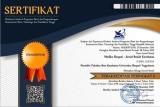HUBUNGAN ANTARA KARAKTERISTIK DEMOGRAFI DAN STIGMA TERKAIT DM DENGAN INISIASI INSULIN PADA PASIEN DIABETES MELLITUS TIPE II DI DAERAH PEDESAAN WILAYAH KERJA PUSKESMAS PLERET BANTUL
Abstract
Relationship between Demographic Characteristics and Dm-Related Stigma with Insulin Initiation in Type II Diabetes Mellitus Patients In the Rural Area of the Pleret Health Center, Bantul
Background: Recent research shows that some people with type II diabetes mellitus who use insulin experience insulin resistance (known as psychological insulin resistance). Many people with type II DM receive diabetes-related stigma based on the fact that the condition is generally more commonly seen as an emerging disease related to lifestyle. Objectives: the aim of this study was to determine a relationship between demography characteristics and stigma related to diabetes mellitus with insulin initiation in type II diabetes mellitus patients in rural areas on Pleret primary health care. Methods: Quantitative with descriptive correlational research was used. Proportion sampling was used and 40 respondents was included. Chi square statistical test was performed. Results: There is a significant relationship between the monthly income of families with insulin initiation. Statistical data also showed p-value = 0.00 (<0.05), that the higher family income, the more risk 35 times greater experience of receiving less insulin. In addition, there is a significant relationship between DM-related stigma and insulin initiation, with p-value=0.00 (<0.05). Conclusion: There is a significant relationship between income and stigma associated with DM with insulin initiation in type II DM patients. However, these results still require deepening and are suggested for researchers to further examine other influencing factors, such as family support and the service system obtained.
Keywords
Full Text:
PDFReferences
Badan Pusat Statistik (BPS) 2013, Daerah Istimewa Yogyakarta Dalam Angka, dilihat 15 Februari 2020, (http://bappeda.jogjaprov.go.id/assets/uploads/docs/DIY_Dalam_Angka_2013.pdf)
Brod, M., Kongsø, J. H., Lessard, S., & Christensen, T. L. (2009). Psychological insulin resistance: patient beliefs and implications for diabetes management. Quality of Life Research : An International Journal of Quality of Life Aspects of Treatment, Care and Rehabilitation, 18(1), 23–32. https://doi.org/10.1007/s11136-008-9419-1
Funnell, M. (2007). Overcoming Barriers to the Initiation of Insulin Therapy. Clinical Diabetes, 25, 36–38. https://doi.org/10.2337/diaclin.25.1.36
Haque, M., Emerson, S. H., Dennison, C. R., Navsa, M., & Levitt, N. S. (2005). Barriers to initiating insulin therapy in patients with type 2 diabetes mellitus in public-sector primary health care centres in Cape Town. South African Medical Journal = Suid-Afrikaanse Tydskrif Vir Geneeskunde, 95(10), 798–802.
Holmes-Truscott, E., & Speight, J. (2017). Psychological barriers to insulin use among Australians with type 2 diabetes and clinical strategies to reduce them. 2.
International Diabetes Federation (IDF). (2014). IDF Diabetes Atlas Sixth edition, 2014 Update. In Idf.Org. https://doi.org/2-930229-80-2
Larkin, M. E., Capasso, V. A., Chen, C.-L., Mahoney, E. K., Hazard, B., Cagliero, E., & Nathan, D. M. (2008). Measuring psychological insulin resistance: barriers to insulin use. The Diabetes Educator, 34(3), 511–517. https://doi.org/10.1177/0145721708317869
Lerman, I., Díaz, J., Ibarguengoitia, M., Gómez-Pérez, F., Villa, A., Velasco, M., Cruz, R., & Rodrigo, J. (2009). Nonadherence to Insulin Therapy in Low-Income, Type 2 Diabetic Patients. Endocrine Practice : Official Journal of the American College of Endocrinology and the American Association of Clinical Endocrinologists, 15, 41–46. https://doi.org/10.4158/EP.15.1.41
Lestari, D. T. (2014). Inisiasi Insulin Pada Pasien Diabetes Melitus Tipe 2 di Rumah Sakit di Rumah sakit Daerah Kabupaten Kudus. PROSIDING SEMINAR NASIONAL & INTERNASIONAL, 2(1), 13.
Notoatmodjo, S. (2010). Ilmu perilaku kesehatan. Jakarta: Rineka Cipta, 200, 26–35.
Peyrot, M., Rubin, R. R., Lauritzen, T., Snoek, F. J., Matthews, D. R., & Skovlund, S. E. (2005). Psychosocial problems and barriers to improved diabetes management: results of the Cross-National Diabetes Attitudes, Wishes and Needs (DAWN) Study. Diabetic Medicine : A Journal of the British Diabetic Association, 22(10), 1379–1385. https://doi.org/10.1111/j.1464-5491.2005.01644.x
Polonsky, W. H., Fisher, L., Guzman, S., Villa-Caballero, L., & Edelman, S. V. (2005). Psychological insulin resistance in patients with type 2 diabetes: the scope of the problem. Diabetes Care, 28(10), 2543–2545. https://doi.org/10.2337/diacare.28.10.2543
Riskesdas 2013. Prevalensi diabetes, hipertiroid, hipertensi menurut karakteristik, Indonesia 2013, dilihat 21 Maret 2020.
Sandström, C. S., Ohlsson, B., Melander, O., Westin, U., Mahadeva, R., & Janciauskiene, S. (2008). An association between Type 2 diabetes and alpha-antitrypsin deficiency. Diabetic Medicine : A Journal of the British Diabetic Association, 25(11), 1370–1373. https://doi.org/10.1111/j.1464-5491.2008.02584.x
Shaw, J. E., Sicree, R. A., & Zimmet, P. Z. (2010). Global estimates of the prevalence of diabetes for 2010 and 2030. Diabetes Research and Clinical Practice, 87(1), 4–14. https://doi.org/10.1016/j.diabres.2009.10.007
Yilmaz, A., Ak, M., Cim, A., Palanci, Y., & Kilinc, F. (2016). Factors influencing insulin usage among type 2 diabetes mellitus patients: A study in Turkish primary care. The European Journal of General Practice, 22(4), 255–261. https://doi.org/10.1080/13814788.2016.1230603
World Health Organization (WHO) 2006, Definition and Diagnosis of Diabetes Mellitus and Intermediate Hyerglikemia. WHO Library Catalaging in Publication Data
DOI: https://doi.org/10.35842/mr.v16i3.366
Article Metrics
Abstract view : 214 ViewPDF - 55 View
Refbacks
- There are currently no refbacks.
Copyright (c) 2021 Medika Respati : Jurnal Ilmiah Kesehatan
Medika Respati : Jurnal Ilmiah Kesehatan indexed by:








